Horticulturists Share How To Prune Mahonia For Open Form, Bushiness Or Shape

Reviewed By DAN ORI

Dan has over 27 years’ under his belt caring for plants and gardens. Working as a Horticultural Instructor and Consultant, he draws on a diverse range of experience that includes working as a Head Gardener, Tree Surgeon, Garden Centre Trouble Shooter, and writer of academic papers. Dan has a Level 3 Diploma in Horticulture and is currently a candidate for the RHS’s most prestigious award – The Master of Horticulture.
IN THIS GUIDE
MAHONIA GUIDES
Pruning
Mahonia, commonly known as ‘Oregon Grape’, is a versatile shrub that is often used by gardeners for hedging and ground cover.
The multi-faceted nature of mahonia partly comes about because it includes 70 species, of which only some vary in their characteristics from the majority.
This diversity extends only to some extent when it comes to pruning mahonia because the number of varieties commonly grown descend from only a few species, though there are some differences.
This is not to suggest that there is a fixed regimen for pruning mahonia – there isn’t, except for one guideline.
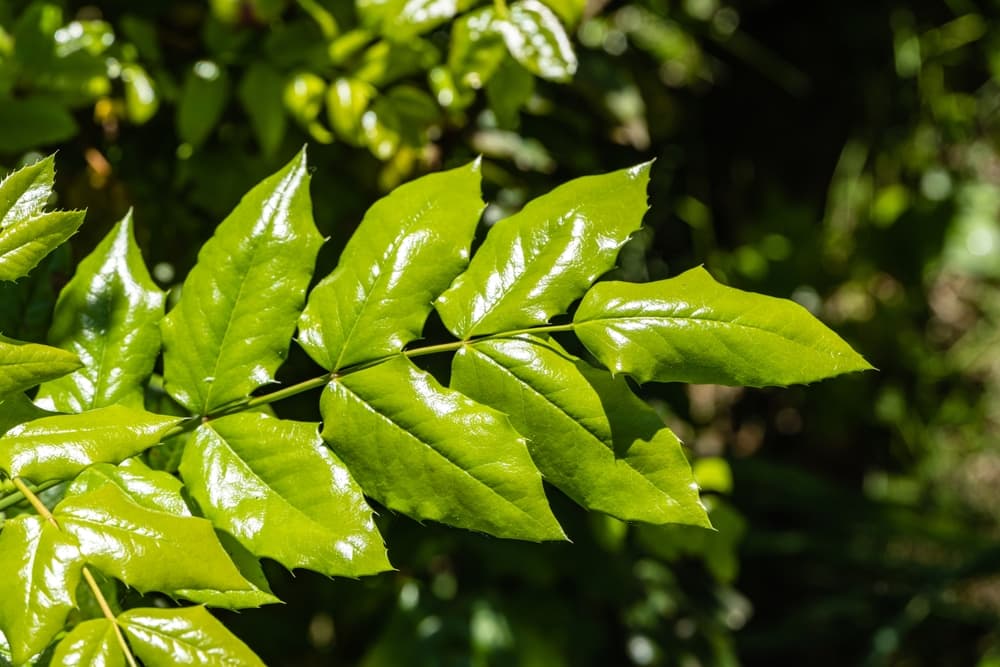
How you prune mahonia depends on the existing state of the particular shrub and what you want from your mahonia plant.
Underneath we explain these needs-dependent pruning activities.
| Difficulty | Medium |
| Equipment Required | Gardening gloves, secateurs, pruning shears |
| When To Prune | Spring |
When To Prune Mahonia
It’s important to note that you don’t have to prune mahonia.
If the shrub is not overgrown or unkempt, not crowding other plants, or does not have bare, dead stems then you do not need to prune it.
However, even if you do not need to prune your mahonia shrubs you may wish to prune them for various reasons.
Whatever reason you prune them for, timing is important.
These winter-spring flowering shrubs should be pruned in spring.
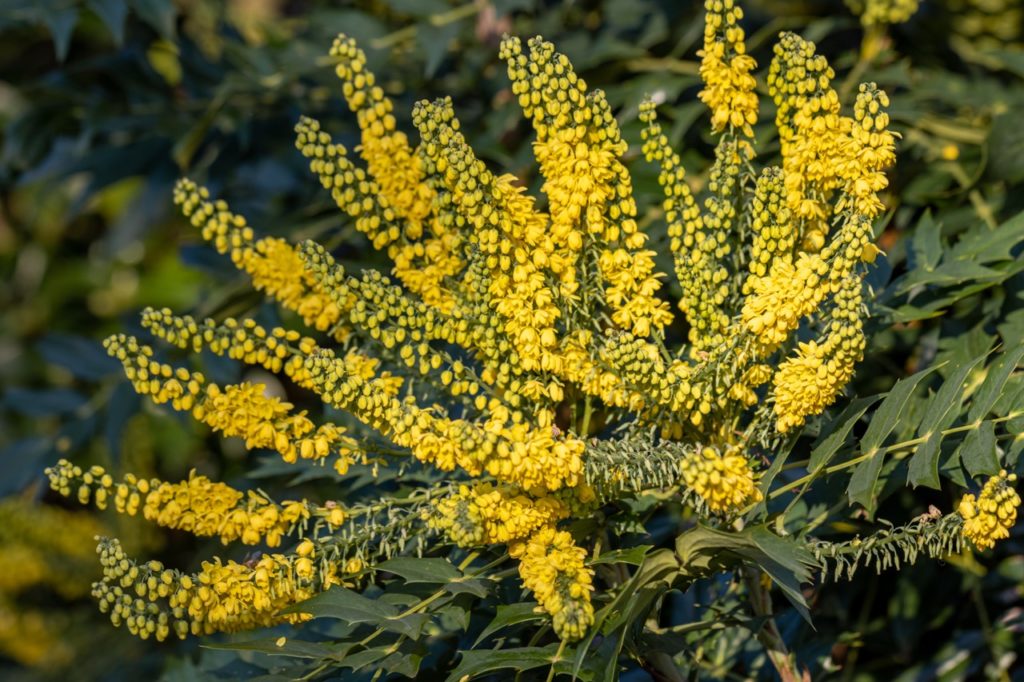
Maintenance pruning, pruning for shape, and all forms of light pruning are best attempted in late spring very soon after fresh growth and new shoots are seen.
Pruning for bushiness, cutting back, and all forms of severe pruning are best attempted in early spring before fresh growth emerges.
I’d strongly recommend that you wear gardening gloves and sterilise your secateurs’ or pruning shears’ blades.
Diluted rubbing alcohol or readily-found hand sanitiser are effective agents for sterilisation.
How To Prune Mahonia
Whichever branches are dead, bare, or diseased should be pruned at their attachments.
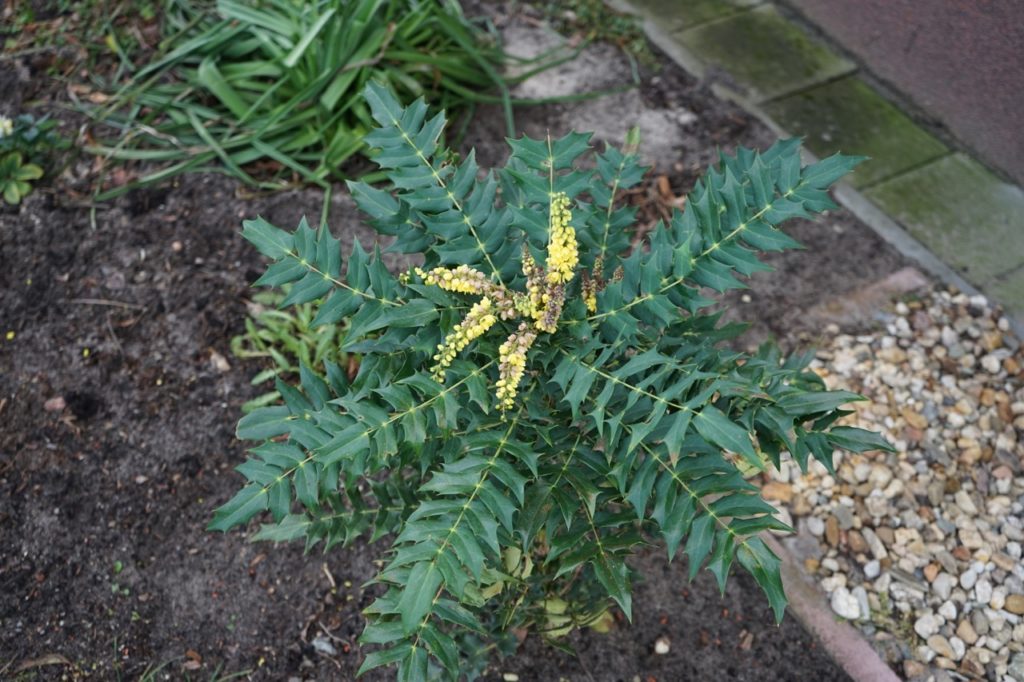
In addition, it would be a good idea to prune awkwardly-growing branches that may be rubbing against others, jutting out from the base of the main stem or growing at a near-horizontal.
Below are the other ways you can prune your mahonia for your garden needs:
Pruning For Open Form
You can accentuate the lines of the taller, relatively graceful varieties of mahonia by pruning for open form.
Within the first 2-3 seasons, remove competing main stems and leaders, keeping, only around 2-3.
Select branches that are relatively young, well-spaced, and growing at desirable angles between 40-60° to keep.
From among the remainder, prune up to one-third at their attachments.
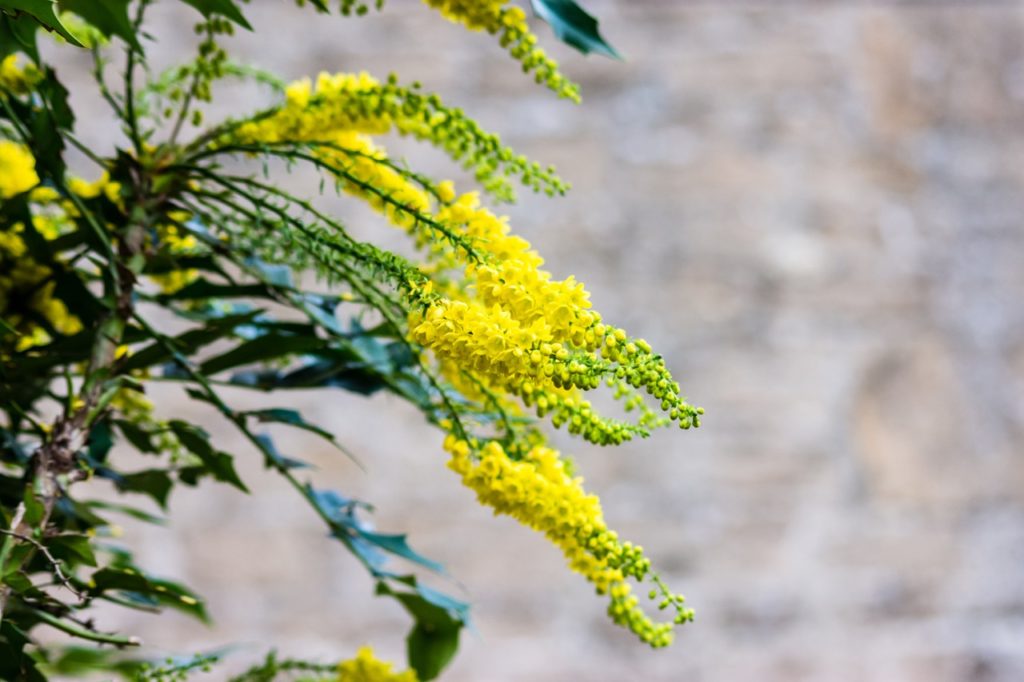
Even if two close-by branches are young and vigorous, one will have to go if you want to achieve that graceful look with arcing canes and open branching.
When pruning an overgrown, dense bush in this fashion I find it helpful to mark (with a simple watercolour marker) the canes intended for pruning when you are planning.
Such markings will eliminate mix-ups and errors that are part and parcel of pruning and make the actual pruning easier and more mechanical.
Pruning For Bushiness
If your shrub has become leggy and straggly with sparse long branches, you can prune it to make it bushier, or you can even prune a ‘normal’ specimen to encourage bushiness.
First, prune the main stem and canes at the desired height to close out vertical growth.
Next, prune up to one-third of the lowermost and longest canes and branches to ground level or their attachments respectively, or cut them to one-third of their lengths.
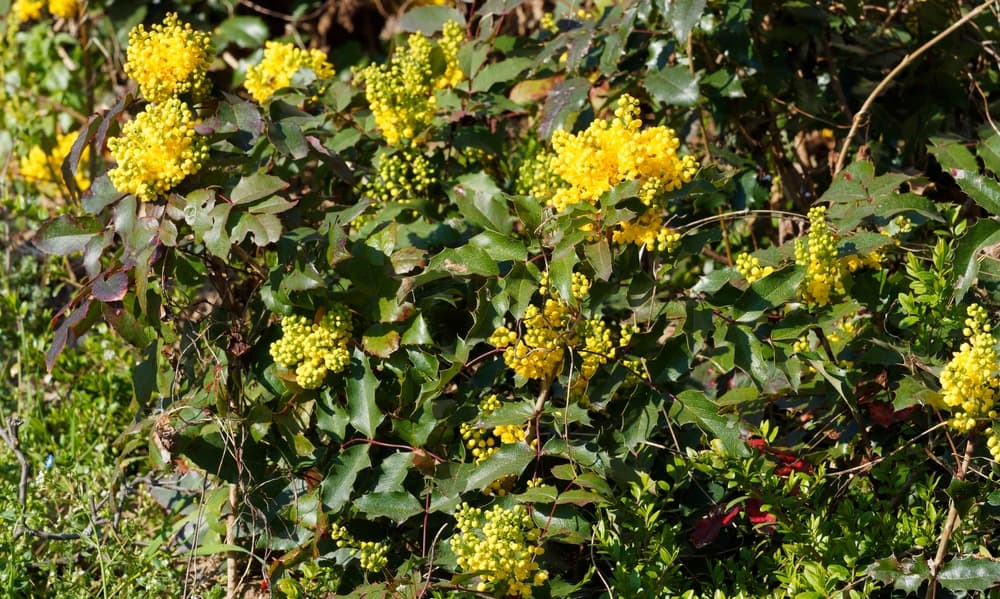
You can also cut some of the longer branches by 30-50% of their lengths to make the shrub more compact and to stimulate side shoots on the branches.
Try to make the cut just above a node.
This type of pruning will trigger fresh growth near the base of the shrub, resulting in a bushier, fuller form.
Pruning For Shape
Yes, Mahonia does not count as a topiary shrub but it is more amenable to shaping than most others.
You can prune Mahonia shrubs into a compact simple shape, such as an oval.
However, to be able to prune Mahonia shrubs for shape, the variety has to be of a bushy type to begin with.
Then it should have been pruned for bushiness for a few seasons, and then allowed a season or two to grow.
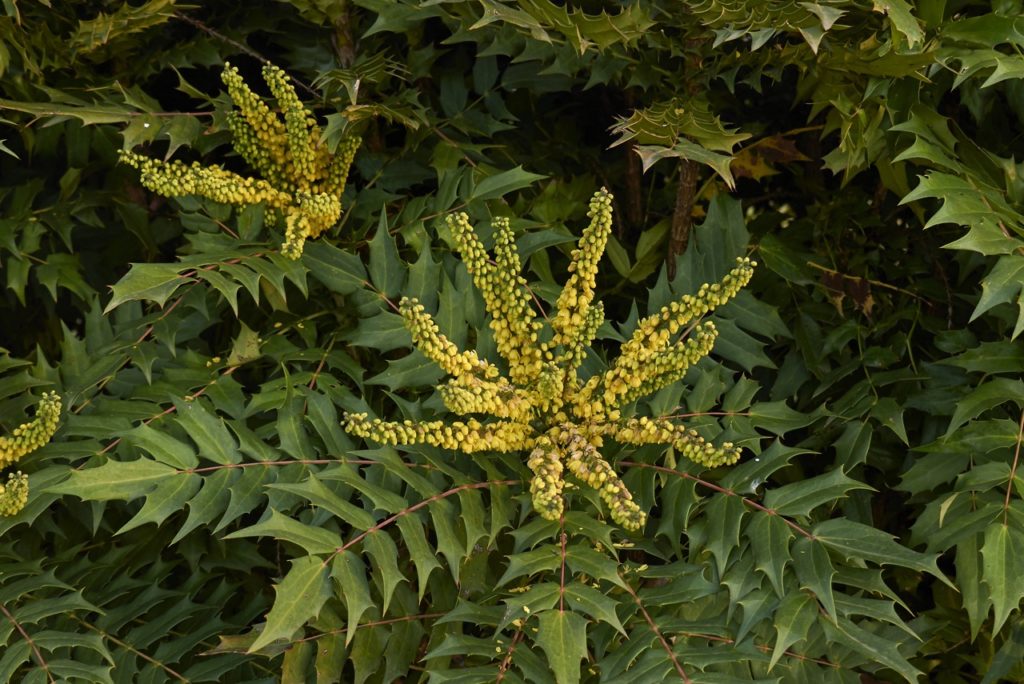
To prune for shape, do not prune any canes or side-branches at their attachments.
Instead, visualise the desired shape and ‘sculpt’ for it, much as is done to a topiary shrub.
You will not be selecting branches to prune; rather, some branches will get cut at whatever points of their length as an outcome of the ‘sculpting’.
However, it’s typically best to cut just above a node and not to cut more than one-third of the shrub.
“You may find species like Mahonia aquifolium send growth out from below the ground that you don’t want,” explains Master Horticulturist Dan Ori.
“This is called suckering and you can remove suckers in late spring or early summer with loppers or a sharp spade.”
After Pruning
After you prune your mahonia shrubs it is a good idea to feed them.
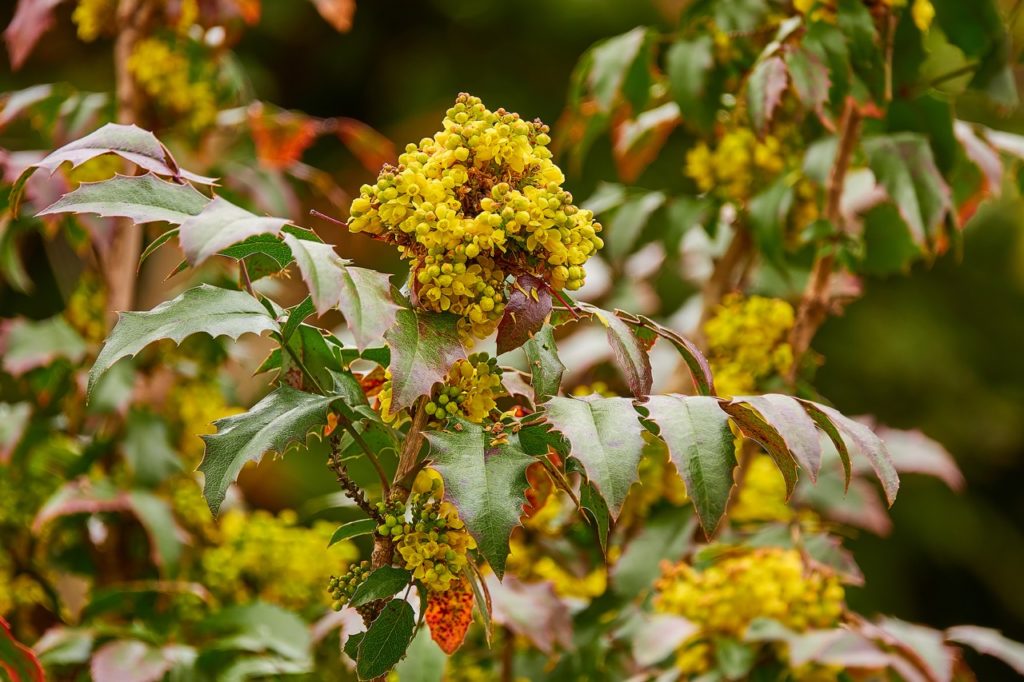
A balanced organic fertiliser or slow-release granules of a balanced formula worked into the soil a safe distance from the crown would work very well.

